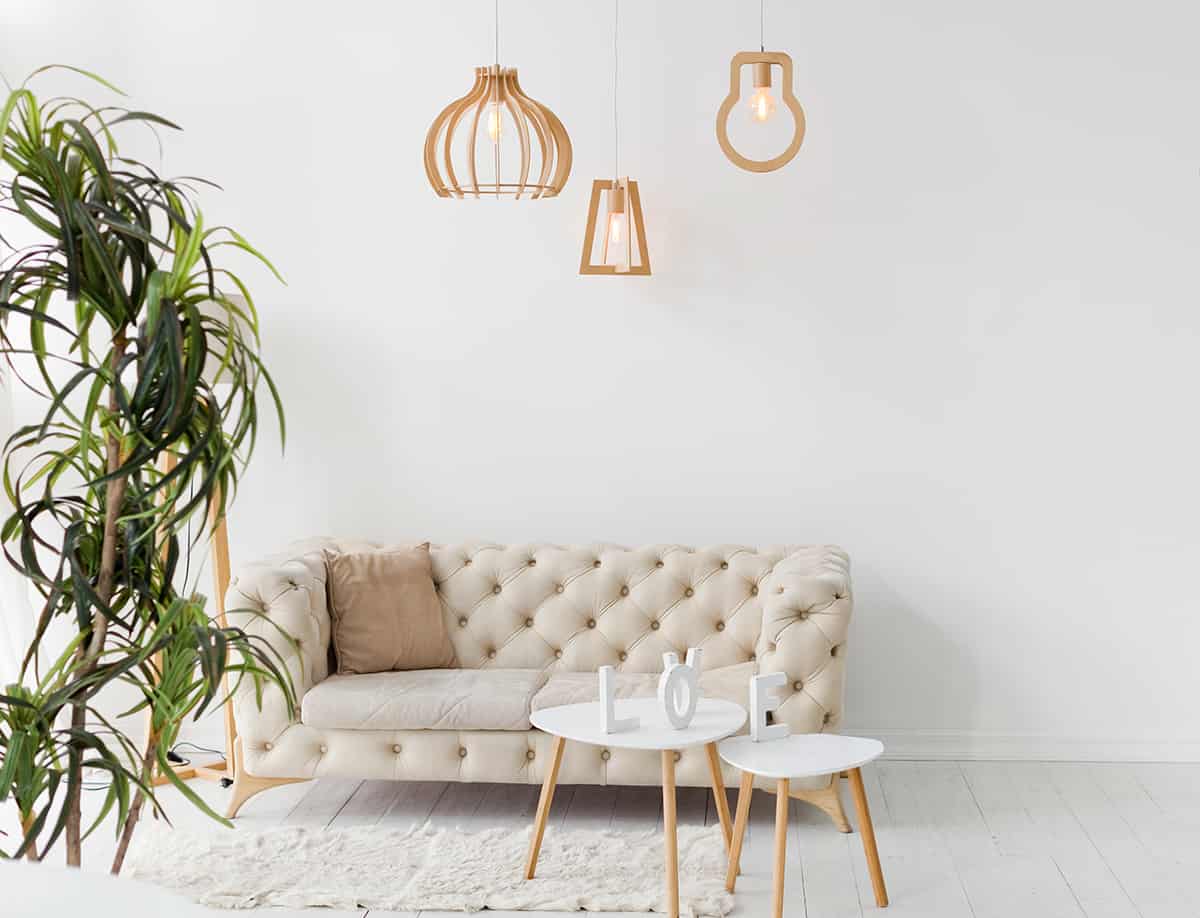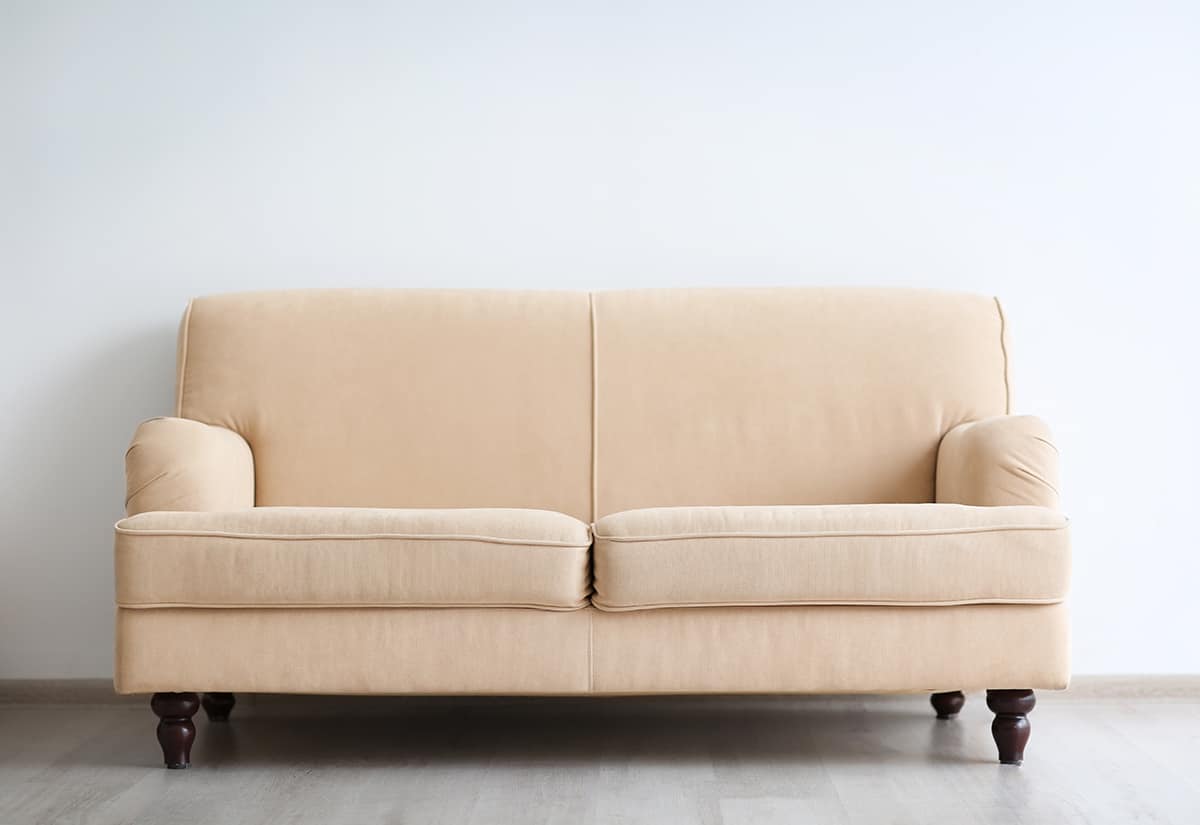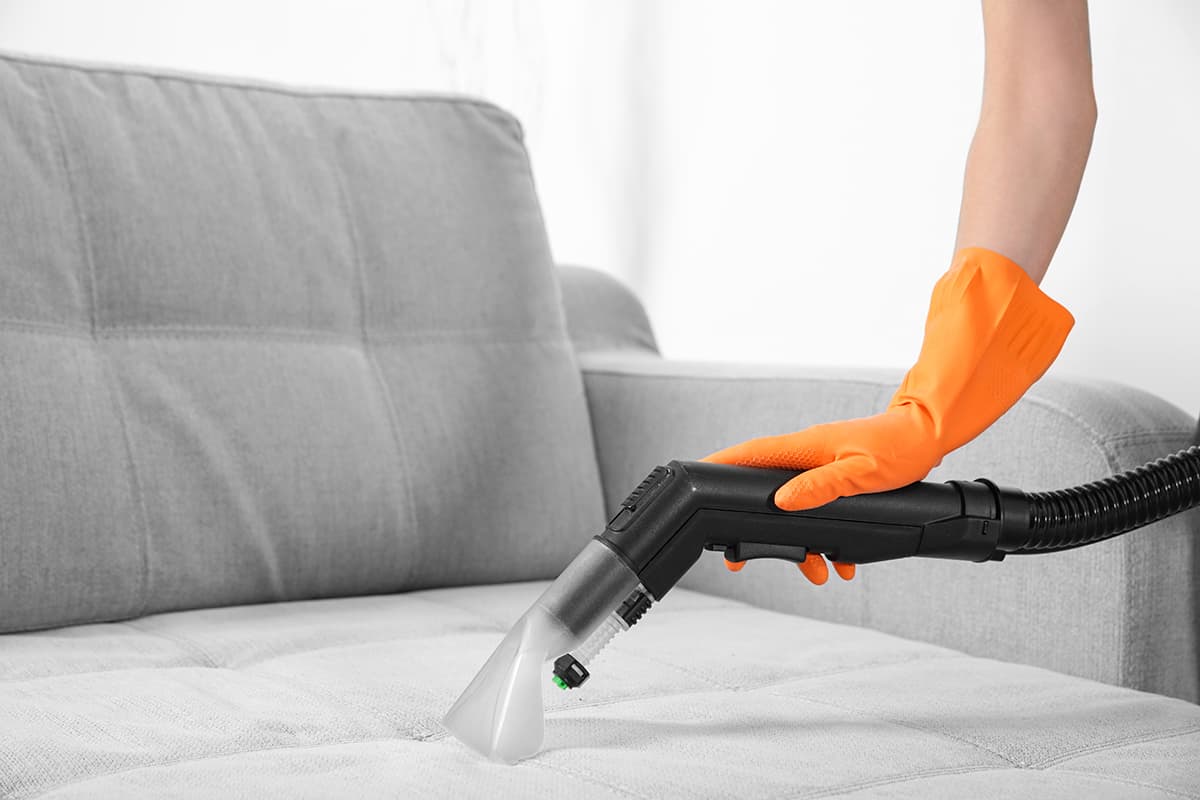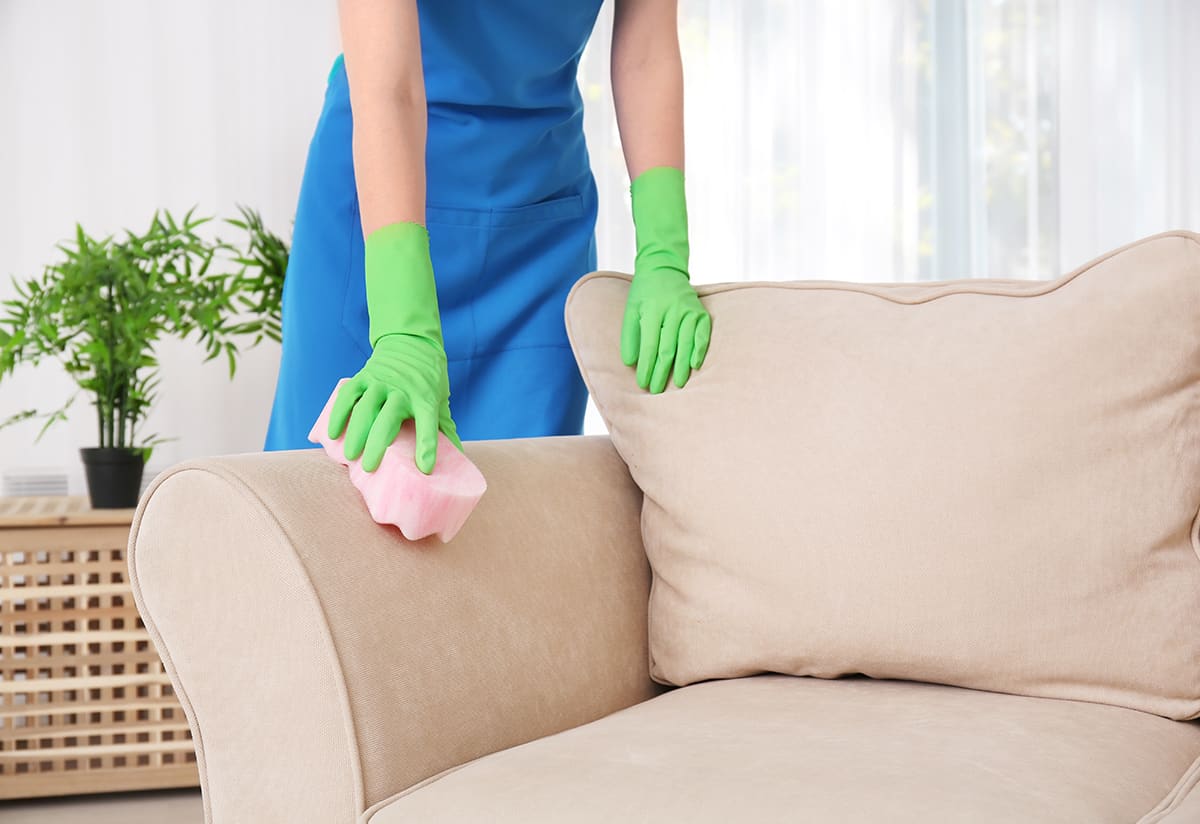Light-colored couches in shades such as ivory, oatmeal, and dove gray are incredibly stylish, but they can be tough to keep clean. Stains from spills, pets, or general use are going to be much more obvious on a light-colored sofa compared to a medium or darker-colored sofa, so it’s worth investing extra time and effort to maintain a spotless pale couch.
This can include preventing spills from happening in the first place, protecting the couch with slipcovers and throws, and having upholstery cleaners to hand.
Maintaining a Light Colored Couch
Prevention
The absolute best way to keep a light-colored couch clean is to prevent stains from happening. Prevention is certainly better than cure in this case, and it will help your couch to stay looking new for as long as possible. There are a variety of ways you can help to prevent stains and spills on your light-colored couch, including:
Keep pets off the couch
Allowing pets on the couch is a surefire way to get a cream-colored sofa to turn beige and murky. Household pets like dogs and cats can have muddy paws, or harbor dirt in their fur, which will transfer itself onto couch fabric when they jump onto the furniture. Even the cleanest of pets will gradually cause wear on a light-colored sofa which will cause it to become patchy and discolored.
Pets also shed their fur, which has a tendency to stick to couch fabric and make it look dirty. The best way to prevent this is simply to have a house rule that no pets are allowed on the couch. If you want to have a cuddle with your furry friend on the couch, you could have them on your lap where they won’t come into contact with the couch fabric, or you could lay out a special blanket on the couch for them to sit on.
No food or drinks on the couch
Food spills are one of the worst culprits for staining a light-colored couch because they tend to be bright or dark colors that show up severely. Ketchup, chocolate, gravy, red wine, cola, and grease, cause unsightly stains that can completely ruin a light-colored sofa.
The only way to completely eliminate the chance of these stains from happening is to ban anyone in your home from consuming food and drinks while on the couch. This can work for some people, but for others, it isn’t practical. If you like to enjoy a drink on the sofa, make sure you have sturdy coasters nearby where you can set your drink down safely to minimize the chance of mishaps. If you want to eat dinner on the couch, use a lap tray so that any spillages will fall onto the tray rather than on the sofa.
No pens or crayons on the couch
The ink from pens is very difficult to clean out of couch fabric, and crayons can also leave harsh marks that ruin the look of a sofa. If you have children in the home, don’t let them use drawing materials on the sofa, and encourage instead that they sit on the floor with a tray, or at the table.
Well-behaved children won’t intentionally draw on the couch, but they can accidentally fall off the page when drawing and marking the sofa. Banning pens and crayons on the sofa will stop this from happening.
Wash hands frequently
Encouraging everyone in the family to frequently wash their hands is great for personal hygiene but it also helps to keep light-colored couches clean.
Children might have greasy hands after eating a packet of potato chips, or remnants of chocolate on their hands after eating a chocolate bar, and these will be transferred onto the couch fabric if they then go and sit on the sofa. Remnants of mud or sand may also be on their hands if they’ve been playing outside.
Keep your feet off the couch
If you walk around the house in bare feet and then put those bare feet on the couch, then you will be transferring any dirt from your floors onto the light-colored fabric of your sofa. Though this won’t cause the couch to have a sudden harsh stain, it will result in a shadowy area over time if you continue to rest your feet in the same spot.
You can prevent this from happening by keeping your feet off the couch, or you can use slippers when walking around the house so that your feet aren’t coming into contact with the floor.
Move furniture around
The sun will fade or bleach fabric over time, so in order to prevent one area of your couch from becoming discolored, it’s a good idea to move around the furniture in your room. By routinely changing the layout of the room every 6 months, you can help to even out any sun damage so your couch doesn’t wear too quickly.
Don’t always sit on one spot
We’ve all seen examples of sofas where it’s very obvious which seat is the favorite. The most used spot on a couch will usually have deflated cushioning, be slightly darker than the rest of the couch, and it may even have fabric that has been worn away. You should always aim to sit on different seats on the sofa so that it wears evenly. This will help to keep the sofa looking newer for longer, and will help to keep the light-colored couch fabric clean.
Use blankets and throws
If you’ve got a beautiful light-colored couch you probably want to show it off, but if you aren’t expecting guests then you can preserve the color of your sofa by protecting it with blankets and throws. Use throws that compliment the style of your room and they can actually be an appealing feature in the space as well as a means of protecting your sofa from getting dirty.
Use slipcovers
If you aren’t keen on having lots of rules about what can and cannot happen near your couch, then a slipcover is a good way to keep it clean. A slipcover will prevent stains, spills, or marks from wear and tear getting on your couch. You can allow pets on your couch, eat on your couch, and let your kids use pens on your couch without the worry that your couch is going to get ruined.
Vacuum regularly
Aim to vacuum your couch as regularly as you vacuum your carpets; the more frequently the better. This will lift any dust and dirt before it has a chance to become embedded in the fabric of the couch, therefore preventing stains from setting in. Use a handheld vacuum for the couch or the fabric attachment on a regular vacuum.
Cure
It’s a fact of life that accidents happen, no matter how careful you are around your light-colored couch. If a spill or stain does occur then acting fast to clean it up is essential. It also helps to know how to deal with certain types of stains so that you stand the best chance of keeping your light-colored couch clean.
Paper towels
You should always have paper towels in your home so that as soon as an accident occurs you can quickly blot up any excess liquid. This can stop the stain from spreading or becoming deeper. When blotting up spills with paper towels on fabric, press the paper towel firmly onto the spill so it absorbs as much as possible without smearing the stain across more of the surface.
Upholstery cleaners
There are plenty of upholstery cleaners on the market that is designed to remove stains from fabric sofas, curtains, rugs, and carpets. It’s a good idea to keep an upholstery cleaner in your cleaning cabinet in the event of a spill because these are much better at removing stains that are fresh as opposed to stains that are dried on or have set in. Follow the instructions on the upholstery cleaner and always do a test patch first in an inconspicuous location. On a couch, the back wall is often an ideal place to perform a patch test, if the sofa typically is set against the wall.
Natural cleaners
If you find yourself in a position where a stain has happened and you don’t have any upholstery cleaner available, you can try to clean up the stain with natural cleaners you probably already have in the home. Natural cleaners are also great if you prefer solutions that are not harmful to the environment, and are more gentle to use around pets and children.
A good homemade fabric cleaner can be made up of a ¼ cup of white vinegar, a ¼ cup of water, and ½ a teaspoon of liquid dish soap and mixed into a spray bottle. Baking soda also works well when made into a paste with vinegar for stains that are more persistent.










